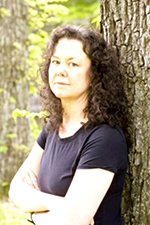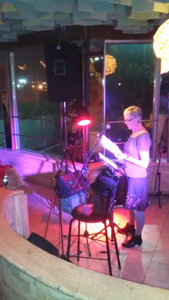A Child's-Eye View: Frances Backhouse in Conversation with Madeline Sonik

Malahat creative nonfiction board member Frances Backhouse talks with Madeline Sonik about childhood curiosity, historical context, and psychic distance in her essay "Stay Sick, Turn Blue," published in Issue #200.
The Malahat Review's Issue #200 is our fiftieth anniversary issue. It features Victoria writers past, present, and future. Be sure to check out the Issue #200 page for book reviews, interviews, and a complete list of contributors.
One of your strengths as a memoirist, demonstrated in this essay and others, is the way you use diction, syntax and well-chosen details to convey a child’s-eye view of the world that feels deeply authentic. Yet even when you write in present tense, the reader feels the constant presence of the more worldly and knowledgeable adult writer and understands things that the child has not grasped. How easy or difficult was it for you to find the right balance between these two narrative perspectives when you were writing “Stay Sick, Turn Blue”?
I don’t really think of finding the optimum balance in narrative perspectives when I write a piece. I do play with psychic distance quite a bit in personal essays—putting readers right into my awareness as a child, so they can see (and hopefully relate to) the way the world appears through a child’s eyes. Occasionally in this piece, I’ll draw back and make a comment from an adult perspective. I think the reader might feel the adult writer is always present because, in fact, I am—if not as occasional commentator than as scribe who renders the thoughts of a younger me into text.
How do you conduct research for essays that are grounded in distant memories, like “Stay Sick, Turn Blue”? In the story, you mention revisiting the school in “years to come.” Did you go back there with memoir research in mind?
When I went back to the old school, I had no idea I’d write this essay. For many years I did want to write about Mary, and made several attempts but never, until this essay, felt I’d found what it was I needed to learn about the experience of knowing her. In earlier attempts, I was completely focused on the tragedy of the situation—how hard it must have been for her parents and how sad it was for her. To be honest, in earlier versions, I was embarrassed by my young self—by my jealousy and my heartless curiosity. But I think it’s these very human failings that make the piece universal. I also think that the reader is more conscious of the tragedy of Mary’s life, because it’s never stated.
What I find most helpful for these sorts of distant memory pieces, ones that exist in a time before I began keeping a daily journal, are photographs, old songs, comic books I once read, early television shows we watched. These sorts of things open the floodgates on memory, and then, as you write, you discover all kinds of things coming back—even actual things that were said. It’s kind of like harvesting your dreams. If you can recall just a fragment of a dream and write it down, the rest of the dream frequently returns.
There’s a wonderful moment in “Stay Sick, Turn Blue” when you pin the time and place of this story through the action of the children unwrapping their sandwiches: “In our picnic circle, we remove wax paper from our sandwiches even though there are such things as sandwich bags. ‘Don’t wrap it, bag it, in Baggies,’ my classmates sing the television jingle, though our mothers, the sandwich makers, have not yet succumbed to the magnetic seduction of throwaway plastic.” This technique will be familiar to readers who have previously encountered your 2012 essay collection, Afflictions and Departures. How important do you think it is for creative nonfiction writers to establish historical context when writing memoir? How important is it to you and why?
While I think it happens organically for most writers, establishing historical context can serve many different functions in a memoir. In some instances, it can confirm the veracity of a piece. It can also be important in making distinctions between the past and present. For me, the kind of historical context that you’re asking about works as a touchstone for my own memories. It allows me to see, in my mind’s eye, the way things were, and I know this translates to readers who often tell me these sorts of historical details take them back to their childhood.
Near the end of “Stay Sick, Turn Blue,” the narrator acknowledges how scary and baffling she finds Mary’s situation and expresses a desire to make sense of “this strange horrific puzzle.” Were you still trying to make sense of it when you began writing the essay or did the understanding precede the writing?
I don’t know if it was Mary’s situation that I was trying to figure out in writing the essay. I think, rather, it was the burdens of childhood I wanted to explore. There are so many horrific things children face and certainly when I was growing up, children weren’t encouraged to ask questions about these horrors. The adults around us didn’t know how to talk about them and part of the socialization process was learning how to either normalize them or pretend they didn’t exist. My response as an extremely inquisitive child was to try to quietly make sense of taboo things. I’d frequently draw false conclusions, but it didn’t matter, as long as it satisfied my curiosity. Mary also had her horrors to face and similarly had found her own coping mechanisms.
* * * * * * * *










